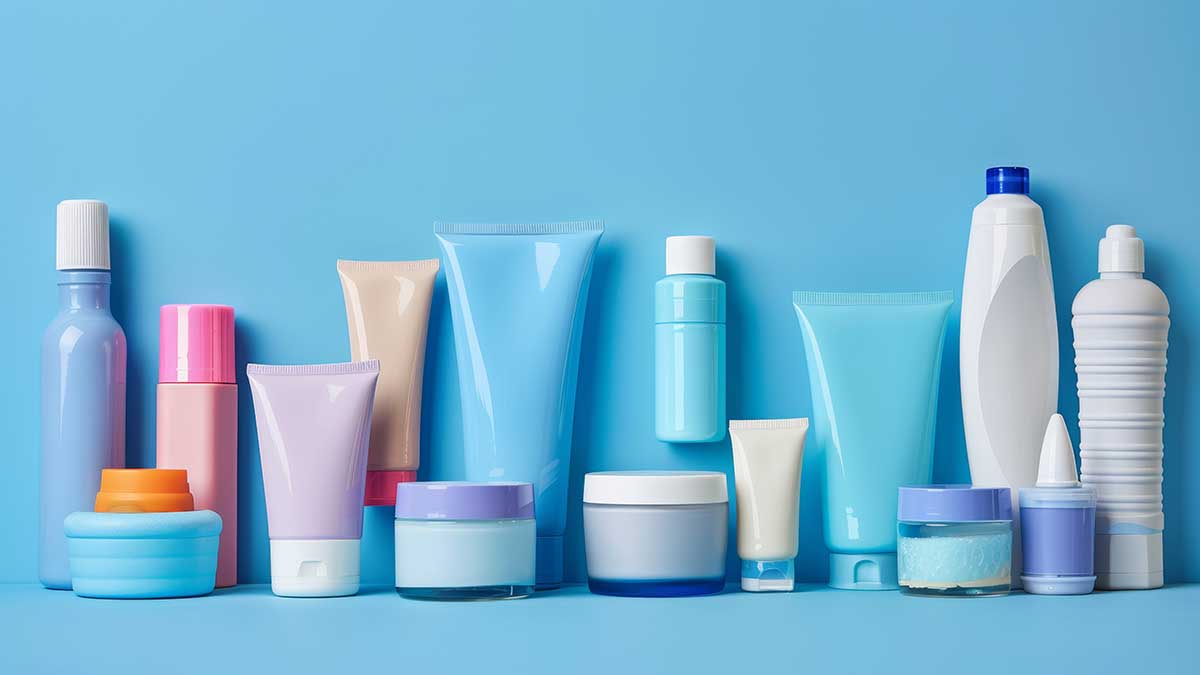The endocrine system is an intricate network of glands and organs that produce and regulate hormones—chemical messengers that control everything from growth to metabolism, mood, and reproduction. When this system works smoothly, it helps maintain balance in our body, known as homeostasis. But what happens when this delicate system is thrown off course by external factors? That’s where endocrine disruptors come in.
Table of Contents
What Are Endocrine Disruptors?
Endocrine disruptors are chemicals or energies that interfere with the normal function of hormones. These substances either block hormonal signals or mimic them, causing a miscommunication in the body’s hormonal system. The result can be significant, as these disruptions can lead to numerous health issues. According to experts, there are an estimated 800 to 1,000 of these disruptors in consumer products and the environment today.
Common Sources of Endocrine Disruptors
Unfortunately, endocrine disruptors are all around us. From the personal care products we use to the water we drink, these chemicals have become a common part of modern life.
According to chief scientist Pete Myers Ph.D, chair and founder of Environmental Health Sciences with its publication Environmental Health News, the future of humankind is uncertain. He states, “Your hormones have been hijacked. Your body’s astonishing, finely calibrated signal system – a system that controls everything from your weight to your fertility to your mood-has been scrambled by loosely regulated chemicals that manufacturers use in a myriad of ways including consumer products.”
Here are some of the most commonly encountered endocrine disruptors:
1. Phthalates
Phthalates are chemicals used to make plastics more durable. They’re found in personal care products like shampoos, moisturizers, deodorants, baby creams, wet wipes, baby powers, and nail polishes. Phthalates are known to interfere with the way hormones work, and studies have shown a link between phthalate exposure and reproductive issues.
2. Bisphenol A (BPA)
BPA is commonly found in plastics, such as water bottles and food packaging, as well as thermal paper used for receipts. BPA mimics estrogen, which can lead to hormonal imbalances.
3. Pesticides (e.g., Atrazine)
Atrazine, one of the most common herbicides, is used extensively in agriculture, especially in the cultivation of corn and sugarcane. Its residue has been found to disrupt the endocrine system by altering hormone levels.
4. Heavy Metals (Mercury, Lead)
Mercury and lead, which are found in certain fish, dental amalgams, and industrial waste, can have a significant impact on fertility, brain function, and hormonal balance.
5. Triclosan
Once a common ingredient in antibacterial soaps and toothpaste, Triclosan was banned in soaps by the FDA in 2016 due to its ability to contribute to bacterial resistance and hormone disruption. However, it is still found in some products, so it’s important to read labels carefully.
6. Flame Retardants (PBDEs)
Found in furniture, electronics, and even breast milk, polybrominated diphenyl ethers (PBDEs) are used to reduce the risk of fire but can accumulate in the body, leading to potential thyroid and reproductive system disruptions.
7. EMFs and Other Artificial Radiation Sources
Electromagnetic fields (EMFs), including those emitted by Wi-Fi, 5G, and other technological industries, are increasingly being recognized as significant endocrine disruptors. These artificial radiation sources can interfere with the body’s natural hormone regulation, but the true impact of this disruption is often underestimated by industries and regulators. Additionally, medical radiation used in diagnostics and treatment can also play a role in hormonal imbalances. Despite its widespread presence, the long-term health effects of EMF exposure on the endocrine system remain inadequately studied, making it a concerning and often overlooked factor in modern health.

Health Concerns Associated with Endocrine Disruptors
Exposure to endocrine disruptors has been linked to a wide range of health issues, many of which can have long-lasting and intergenerational effects. Some of the most concerning outcomes include:
1. Reproductive Health Problems
Endocrine disruptors have been shown to interfere with fertility, causing reduced sperm counts in men and affecting ovulation in women. Some chemicals, like phthalates, are also associated with developmental issues in infants and low birth weights.
2. Thyroid Dysfunction
Your thyroid plays a crucial role in regulating metabolism and energy. Endocrine disruptors such as BPA and flame retardants have been shown to interfere with thyroid hormone production, leading to weight gain, fatigue, and cognitive issues.
3. Neurological Effects
Studies have linked exposure to certain endocrine disruptors with altered brain function and neurological diseases, including learning disabilities, ADHD, and cognitive decline.
4. Metabolic Disorders
Obesity, diabetes, and other metabolic disorders are increasingly linked to environmental chemicals that interfere with the body’s ability to regulate insulin and metabolism. This disruption may start early, as research shows that exposure in utero can increase the risk of obesity and diabetes later in life.
How to Reduce Your Exposure to Endocrine Disruptors
While it might seem overwhelming, there are practical steps you can take to minimize your exposure to these harmful chemicals.
1. Choose Organic Foods
Opt for organic produce and meats whenever possible. Organic farming avoids the use of synthetic pesticides and fertilizers, which are common sources of endocrine disruptors. Wild-caught fish, free from mercury and other pollutants, is also a healthier option.
2. Switch to Glass or Ceramic
Use glass containers for food storage instead of plastic. Plastics often contain harmful chemicals like BPA, which can leach into food, especially when heated. Similarly, avoid using non-stick cookware and opt for glass or ceramic alternatives instead.
3. Go Fragrance-Free
Many personal care products contain synthetic fragrances that can harbor hidden endocrine disruptors. Choose fragrance-free products or those labeled as 100% organic and non-toxic.
4. Filter Your Water
Install a high-quality water filter for both drinking and bathing water. Many chemicals, such as perchlorates and heavy metals, can be found in water supplies, and a filter can help reduce your exposure.
5. Avoid Plastic and Canned Goods
Whenever possible, choose products packaged in glass or paper instead of plastic or cans. The lining of canned foods often contains BPA, and plastic containers may leach harmful chemicals into your food.
6. Use Natural Cleaning Products
Many commercial cleaning products contain harsh chemicals that can act as endocrine disruptors. Consider making your own natural cleaners with ingredients like vinegar, lemon, and essential oils.

Activism: The Call for Change
Reducing your personal exposure is a crucial first step, but the larger issue lies in systemic changes. Regulations for the use of endocrine-disrupting chemicals are lacking, and corporate interests often prevent meaningful reform.
Here’s how you can advocate for broader changes:
- Get Informed: Stay up to date on the latest research and regulatory changes related to endocrine disruptors.
- Support Environmentally Conscious Companies: Choose to spend your money with companies that prioritize eco-friendly, non-toxic products.
- Advocate for Change: Get involved with community efforts, speak to your elected officials, and support legislation that seeks to regulate the use of harmful chemicals in consumer products.
Conclusion
Endocrine disruptors pose a significant threat to our health, but by making informed choices and advocating for greater transparency and regulation, we can protect ourselves and future generations. Start with small changes, like switching to natural products and supporting organic farming, and expand your efforts to contribute to larger systemic reforms. Together, we can reduce the impact of these harmful chemicals and promote a healthier future for all.
References and Recommended Readings
- DECOSTER, S., et al. “Endocrine Disrupting Chemicals: Associated Disorders and Mechanisms of Action.” Journal of Environmental Health, 2012; 2012:713696. DOI: 10.1155/2012/713696.
- Environmental Working Group (EWG). “PBDE-Free.” EWG.org. Available at: https://www.ewg.org/pbdefree.
- Mercola, J. “10 Sources of Endocrine Disruptors and How to Avoid Them.” Articles.mercola.com. Available at: https://articles.mercola.com/sites/articles/archive/2015/10-sources-of-endocrine-disruptors-and-how-to-avoid-them/.
- JIONGSIK, Y., et al. “Associations Between Phthalates, Eosinophil, and Aeroallergen Sensitization in Schoolchildren.” Journal of Korean Medical Science, 2023, November 20; 38(45): E391. DOI: 10.3346/jkms/2023.38.E391.
- NAZ, R. Endocrine Disruptors: Effects on Male and Female Reproductive Systems, 2nd edition, CRC Press, USA, 2019.
- WEATHERLY, L., et al. “Triclosan Exposure, Transformation, and Human Health Effects.” Journal of Toxicology and Environmental Health, 2017; 20(8): 447-469.
- ZHANG, J., et al. “Glucocorticoid and Mineralocorticoid Receptors and Corticosteroid Homeostasis Are Potential Targets for Endocrine-Disrupting Chemicals.” Environmental International, December 2019; 133: 105133. DOI: 10.1016/j.envint.2019.105133.
- Consumer Beware: The Ease of Deception in the Food Industry - October 28, 2025
- The Modern Plague of Addiction: Reflections on a Painful Subject - July 29, 2025
- Let Go to Grow: 10 Transformational Steps to Embrace Change and Thrive - July 29, 2025





